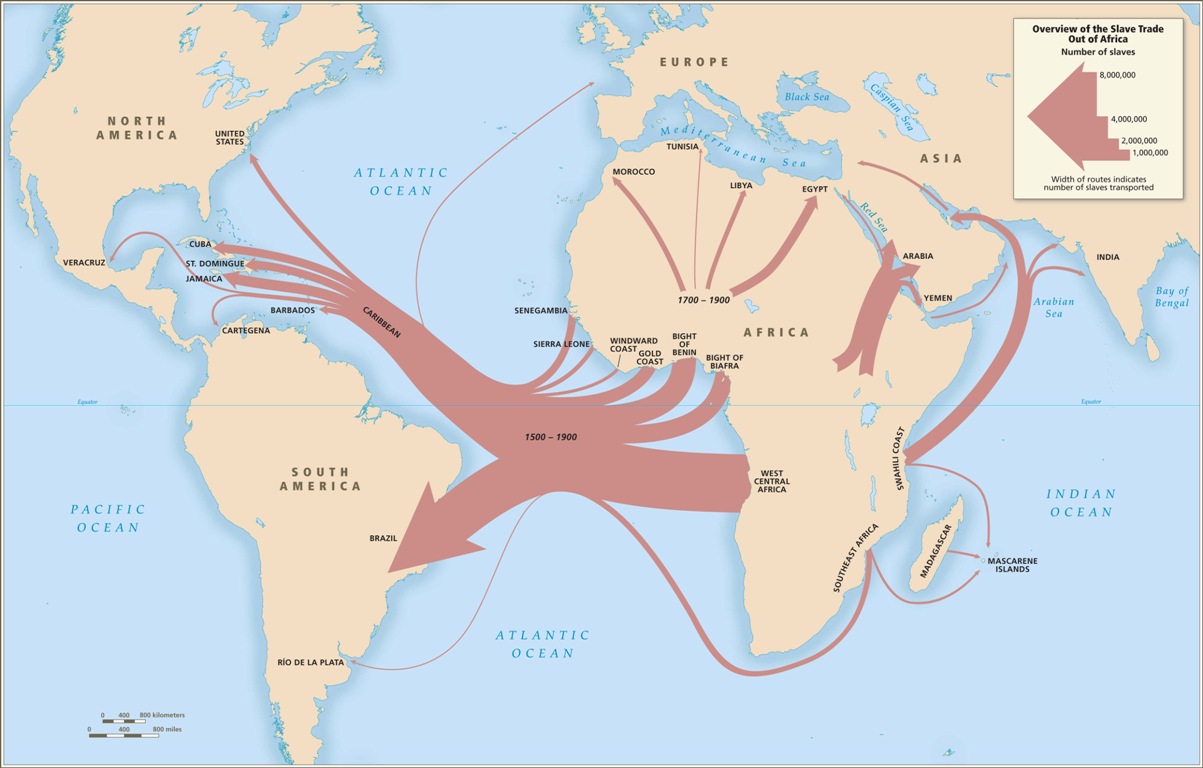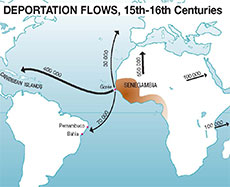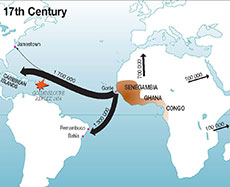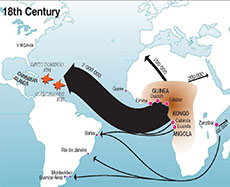
Slave Trade
International Day of Remembrance of the Victims of Slavery and the Transatlantic Slave Trade
For over 400 years, more than 15 million men, women and children were the victims of the tragic transatlantic slave trade, one of the darkest chapters in human history.

In commemoration of the memory of the victims, the General Assembly, in its resolution 62/122 of 17 December 2007, declared 25 March the International Day of Remembrance of the Victims of Slavery and the Transatlantic Slave Trade, to be observed annually.
The resolution also called for the establishment of an outreach programme to mobilize educational institutions, civil society and other organizations to inculcate in future generations the "causes, consequences and lessons of the transatlantic slave trade, and to communicate the dangers of racism and prejudice."
Since then, every year on 25 March, the International Day of Remembrance for the Victims of Slavery and the Transatlantic Slave Trade has offers the opportunity to honour and remember those who suffered and died at the hands of the brutal slavery system.
This International Day also aims at raising awareness about the dangers of racism and prejudice today.
More on the Day and its historical background.
International Day for the Remembrance of the Slave Trade and its Abolition
In the night of 22 to 23 August 1791, men and women, torn from Africa and sold into slavery, revolted against the slave system in Saint-Domingue (now Haiti) to obtain freedom and independence. The uprising set forth events that eventually led to the abolition of the slave trade.
In 1997, UNESCO established 23 August as International Day for the Remembrance of the Slave Trade and its Abolition to pay tribute to all those who fought for freedom, and to continue teaching about their story and their values. The success of this rebellion, led by the slaves themselves, is a deep source of inspiration today for the fight against all forms of servitude, racism, prejudice, racial discrimination and social injustice that are a legacy of slavery.
The Slave Route Project, launched by UNESCO in 1994, examines the foundations, forms of operation, and consequences of the slave trade and slavery in different regions of the world. Through research, development of pedagogical materials, preservation of archives, oral traditions and sites of memory related to slavery, it aims to contribute to a better understanding of the impact of this history on our modern world, highlight global transformations and cultural interactions, and contribute to intercultural dialogue.
Related information:





